|
|
|

|
|
The Northern Kashmir, an ethnical mosaïc :
|
The strategic position of this area at the borders of Afghanistan,
China, India and Central Asia of the Middle East, brought about that this
region developed various cultures, various trades, different faiths and
had many invaders. Its artistic wealth and its heritage are proof of the
continuous changes. In spite of the Moslem hegemony of Cashmere (the Pakistani
Cashmere has a population of close to 2 millions Moslems, mostly Sunnites,
a territory of 79000Km2 and in Indian Cashmere, the Moslem population
is 70%) it occurs that the most striking aspect in the northern region
of Cashmere is the complexity of the ethnics and cultures.
|
|
 |
Usual pictures of
pakistani muslim life.
|
Already on the Karakoram Highway, one is amazed to meet the Hunzakuts,
their faces surprisingly white, red cheek bones, blond hair and blue
eyes. Further at the northern borders, one meets men and women from
Central Asia, Chinese Ouigours or Kazakhs who came to trade at Sust
or Gilgit. Further to the east where the area's still closed from west
Pakistan, we find the little Tibet - Ladakh, India - which is inhabited
by Mongolian people of Tibetan origin. In the Baltistan valley, an area
populated 100% by Moslems, we still find Bouddhist ruins ; in fact the
beautiful Bouddhist painting, near Chilas are well known and represent
proof of past Bouddhist cultures.
|
|
|
Popular polo is the
origin sport from Northern Kashmir
|
In all the mountains on earth and particulary in this region, the
valleys often hide special customs and original cultures which are testimonies
of their life styles, necessarily autarchic in these mountain ranges,
where exchanges or trade is very difficult, especially in winter. This
is especially true in Cashmere because of the elevated valleys which
are enclosed by the very high mountains. Whatsoever, the silk road,
which at that time went through the east region, allowed cultural exchanges
; the famous passes of Shimshal, Karakoram, Mutztagh and Kungerab, were
often used. For this reason the aspects of culture and ethics in Cashmere
are very contradictory ; it's a crossroad of civilizations that enabled
trade and exchange but it also represents an ethnical and cultural hole,
very original and isolated in the lost valleys that are difficult to
reach. Here we find a big assembly
of people, a place of ancestral murderous dispute but also a place
of harmonious well being between ethics of very different cultures.
|
From the Chitral Area to the afghan border :
|
Kailash Minority:
|
The Kailash are part of a small community of 3000. Non Moslems, they
don't adore Allah and are the only non-Moslem people of north Pakistan.
The Kailash believe that their God Dezau came to the Indus Kush valley
on horses that had two heads. They speak Kalashamun. Their territories
went much further into the east Afghan valley before the population
was, by force, converted to Islam at the end of the 19th century. East
Afghanistan was rebabtized "Nuristan" "the Country of
Light". The animists, true to their religious faith, took refuge
on the other side of the Afghan border and joined their next of kin
- cousins, who still live in the valleys of Rumbur and Birir. They were
the inheritors of a millenary culture and received first, the British
protection and thereafter the protection of the Pakistan government.
This is how Wilfried Thesiger discovered the Kailash when he travelled
through the Chitral valley in 1952. (At the time, they were called the
Black Kafirs).
The Black Kafirs who call themselves Kailash Gum, occupy the Brumforet,
Rambor and Barir valleys. They adore their ancient Gods, cultivate grape
wines and set up sculptured wooden statues on the graves of their dead.
Their cousins on the other side of the border, had by force, been converted
to Islam by Abd-er-Rahman, an Afghan Emir, at the end of the 19th century
; their homeland, originally known as Kafiristan, now has the name of
Nouristan "Country of Light". Lots of the Moslems who live
in Chitral are descendants from the refugees of the Red Kafirs who fled
from Kafiristan in 1897. Some years later, I was to go through the Nouristan,
but I'm happy to have seen the population just as it was before in all
of the Kafiristan.
After some days of rest, I visited the Kafirs, accompanied by Mir
Ajam, a political commissioner, who took me in a jeep to a Red Kafir
village called Aijun ; he assured me that it was one of the biggest
villages in Chitral. From Aijun, I went up walking through a narrow
valley from where at its foot, could be seen a clear mountain stream
coming down from the north west. The rocky walls of the two slopes of
the valley are abrupt and covered with trees, also surprisingly, a Kermes
Oak, the leaves look like those of a Holly but the tree can be identified
because of its acorns. Bridges, made of wooden planks, allowed us to
cross the mountain stream. After about one and a half hrs, we turned
into the Brumboret valley, the one more to the south of the two affluents.
The other one, uphill of Brumboret, is called Rambor.
We passed lots of men in groups and young boys who had sacs of walnuts
to take to Aijun. They had long sticks to beat the walnuts and with
which they broke the walnuts open wherever they were. Further up, at
Bromberet, we got to a series of farms and cultivated fields in terraces
wherein they harvested rice and corn. I saw a lot of nut trees and other
fruit trees, some of which were huge mulberries. At this time, the valley
was relatively large and less steep ; however, the two slopes on both
sides were rocky and very marked, first covered by Kermes Oak and further
up by pine trees and fir pine trees. The villages in the Brumboret were
inhabited by Moslems and Black Kafirs. We made a rest in an adjacent
valley of Batrik, a group of about twelve houses well built by the Black
Kafirs. The men dressed like Moslems, the women and small Kafir girls,
however, had a head cover which was characteristically decorated with
little shells. All the women and young girls wore a very large dark
brown garment that they attached at the waist.
I took lots of photos of the Kafir - men, women and children, as well
as two wooden statues approx 1.80m high with which they decorate their
tombs. The corpses are buried in wooden coffins ; they are taken to
a corner of a field and left there to decompose by themselves. The statues
apparently are there in remembrance of the dead but nobody minded when
I moved them to take a better photo ; they were even pleased when I
looked for the best exposure. The front of the Kafir houses are also
decorated by rustic sculptures. Above Brumboret, the path that leads
into the Barir valley is an extremely steep trail between firstly, Kermes
Oaks and then goes through a huge forest of pines and Himalayan cedars.
I saw no birds there and noticed on the trail, recent smoke, no doubt
that it came from a markhor. Going down into Barir, the slope was much
more abrupt, hardly any existing trail. At the foot of a narrow gorge,
we found some Kafir houses surrounded by rice and millet grass fields
as well as fruit trees and grape wines. We took a one and a half hr
rest during which we swallowed large quantities of small sugared grapes;
we picked them from a climbing grape wine which was at least 9m high.
We then continued to go down the valley towards Gurru ; there, the houses
looked as if they were suspended from a hill, just above the stream.
It seemed to me that the Barir valley was prettier than the Brumboret
one. The first group of houses we went by was inhabited by Moslems and
Kafirs ; however, I learned that the Kafir were overwhelming the Moslems.
These Moslems, as well as the newly converted, were very strict about
the call of prayer. In Gurru and the area, the houses belong to the
Kafirs. I noticed some non- resemblances between them and those of Chitral.
For example, contrary to the men and young people of Chitral, none of
the Kafirs or Moslems carry a bow ; other than that, smoke of the domestic
fire only comes out the doors ; there is no funnel above the fire place.
I found the Kafir villages quite dirty and in Gurru, I counted 60 bedbugs
in my sleeping bag. At Gurru, I found 8 burial sculptures carved in
wood on top of a small cliff ; they were approx 1.50m high and thus
smaller than those I saw the day before. They were representations of
men, practically nude except for a short loin cloth with pompons and
on their heads they had various shaped helmets. I also noticed that
some Kafirs too, wore cloths with pompons around the waist which were
attached to the shoulder ; underneath though, they wore pants. Two statues
were in the shade, I took them down to a field to photograph them.
(source "In the Asian Mountains" Surprising Travellers Collection,
Loebeke edition
Even if protected, these people are close to extinction. Little by
little the homelands of the Kailash are taken from them. Considered
to be impure, the Kailash undergo many pressures from the Moslem farmers,
schoolteachers, civil servants or the mullahs who insist on them becoming
a member of Islam. Their cultural living areas become less and less,
Islam always claims more ground. How long can this culture still survive
? The days of the Kailash might.
|
Pathan community of Kashmir :
|
The Pathans (or Pachtouns) live on both sides of the Afghan borders.
Their language, which belongs to the Indo-Iranian group, is Pashto.
It's a war tribe divided into many clans and tribes with war like characters
and lots of independence. In Pakistan, they distinguish the mountain
Pathans, who traditionally live from highway robberies from those who
live in the plains and are agricultures. They are appreciated for their
construction talents. There were many refugee camps of Pathans in Pakistan
during the Afghan war including the north of the country.
|
Kho Minority of kashmir:
|
The Kho community lives in the Ghizar region and represents the main
population of the Chitral valley (80%). They are of Moslem Sunnite majority
but they are Ismaleans in the northern part of the Chitral valley. The
Kho minorities were attached to the Pakistani government in 1970. The
Kho's craft work is highly appreciated. Their potteries and the qualities
of their songs are legendary.
|
High valleys of Hunza and Kashmir :
|
The Hunza valley :
|
|
|
|
|
Hunza valley from Karimabad
|
With its rocks, its streams, its superbe mountains, its apricot trees
and their barley and wheat cultivations, the Hunza valley offers beautiful
scenery. Ever since many centuries, the travellers are amazed by the
miracles of green cultivated terraces of the Hunza country, these were
cut directly into a forest of desert mountains. Seeing that the valley
only received 14 centimeters of rain per year, the fields and fruit
trees depended entirely on irrigation canals that caught the waters
of the streams and then , in turn received the waters of the melting
snows of the glaciers and the tops of the mountains.
During the 60ties and up until the availability of regular flights
between Islamabad and Gilgit became possible, the Hunza valley was totally
closed in - one could only reach it by jeep going through the high Swat
valley after a long journey. Since the 80ties, the Karakoram Hwy opened
this valley.
(To learn more about the Hunza valley, click on the encyclopedia AGORA
touch : l'encyclopédie
AGORA (valley of the immortels by Helen Laberge)
|
Irrigation, the miracle of Northern Kashmir :
|
|
|
 |
Channels in Karimabad.
Hunza's water is very precious
|
On this soil, where it rains even less than in the Sahara, irrigation
is vital for mankind. Without it, no cultivation and no life in these
valleys. The water that comes down from the glaciers is caught and then
distributed thanks to irrigation canals which are set up by specific
maps in the mountains and sometimes built on the side of the cliffs
of more than hundreds of meters. These works need to respect a certain
calculated slope ; not to abrupt because the water may erode the canal
and not too flat either because sand may come into the water. This is
why the reappearance of water from a canal often occurs from a collector
that was built like ten kilometres uphill. In this way, the water is
distributed according to the richness of the cultivated parts thanks
to many traps next to the water canal.
The water in these canals comes from the melting snows of the glaciers,
it's full of precious minerals. One could even assume that the surprisingly
long, healthy life of the inhabitants of these valleys, is due to it.
It's surprising to see one's skin shine gloriously after having taken
a shower in this water.
Whatever, it's greatest power is probably not magic but the means
to fertilize these valleys which, without water, would only be rocks,
sand and dust.
|
Wakhi minority of Kashmir :
|
 |
|
The upper Hunza
|
The Wakhi people are installed at the borders of Afghanistan and Tadjikstan
at the foot of the Chinese and Pakistani Xing Yang. On the contrary
to all the communities one meets in these high valleys, the women play
a leading part ; they take care of the milking and the transport of
the herd to their high pastures. As for the men, they stay in their
villages to take care of their crop cultivations. The Whakhi community
exists for at least 2 500 years ; they converted to Islam and belong
to the Ismalian branch of Islam. The endurance of the porters and their
welcome are remarkable.
In the high Hunza valleys, they speak Wakhi Iranian, it's there where
the bond between the Wakhan and Bodakshan gorge is traditionally narrow
because of many caravan passages and herds that go through the Kilik
pass. The Kighises Afghans, when the Soviet troops invaded and annexed
Wakhan, found a natural refuge ten years ago in the Gojal region before
they were welcomed in Turkey, where still today, they have established
themselves in a large majority.
|
The Shimshal valley near the border of
China :
|
 |
|
Shimshal village
|
It's in the Shimshal valley that one finds the biggest Wakhi Ismalian
community. Isolated, they get along alone ; they always insisted on
a certain independence towards the Mir of Hunza whose jurisdiction it
represents. The high Shimshal valley has the five biggest glaciers coming
from the north, the Kanjut-Trivor line, those are the Momhil, Malangutti,
Yazaghie, Khurdopin and Virjerab glaciers.
|
The Ismaelis religion :
|
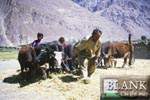 |
|
Harvest in Shimshal
|
Shimshal is a village nestling in the high valleys of Karakoram.
The discovery of Shimshal is a must for all those looking for new cultures.
The people of Shimshal, who are Ismalians, are very welcoming people.
It's preferable to go with a guide who will help you more to discover
the particular culture of this community than only show you the way.
To know more about the Ismalians, the excellent book of Michel Malherbe
"The Religions of Humanity" will allow to better understand
this particularity attributed to the inhabitants of the Hunza valley
:
"Ismalian is born through a Chiisme reform promoted by Ismael,
the eldest son of the sixth Chiite Iman Djafar. However, Ismael died
in 751, fourteen years before his father and was thus never able to
become Iman as he should have.
The Ismalian partisants refuse the seventh Iman as well as the others
that followed - they remain attached to their master, considered to
be the seventh " hidden Iman". Today, they have no political
influence but their solid community is of big economical influence.
The Ismalians can be divided into two branches ; the Mustalis and the
Nizaris. The Nizaris who recognize the Agha Khan Iman, live in the mountainous
regions of Central Asia - there were about 250,000 of them in Afghanistan
in the Bamyam region, 120,000 in Tadjikstan, 80,000 in the Chinese Xing
Yang, 120,000 in Syria, 80,000 in Ian and 250,000 in various regions
of India and Pakistan. The role of the Iman is considerable because
he represents the manifestation of God on earth as a human. He is a
superior being who serves as an intermediary between God and the soals
who are to go to heaven. By his speeches and writings the Iman Agha
Khan, gives spiritual instructions to the faithful and guides them.
By exaggerating a little, one could say that the Ismalians consider
the usual Islam as an elementary form of spiritual life and because
of that, they don't hesitate declaring themselves Moslems. However,
there is also a secret esoteric doctrine, called "Batin".
The Ismalians who assume to have the knowledge of this esoterisme, are
able to interiorize and interlectualize their religion. This explains
that the rules of the Coran do not seem strictly compulsory to them
and may be used as a symbolic means. The Nizari Ismalians usually only
pray twice a day, they do not restrict themselves to the Ramadan fasting
and prescribe monogamy. That means, that the Ismalians are far from
being fanatics and they easily accept discussions with other religions.
Never however, they make use of any proselytisme, which in some way,
explains the weakness concerning their values.


|
The altitude porters of Shimshal :
|
The strength of the Shimshal porters is known world wide by all the
mountain climbers. Three reasons allow to affirm that these inhabitants
are in exceptionally good shape which is of course, very useful for
the international expeditions who attack the great mountains of Pakistan.
Firstly, the Ismalians don't smoke, drink or use any drugs. Furthermore,
seeing that Shimshal was, at that time, separated from the nearest road
by a five days walk (today it's only two) all the prefabricated products
had to be carried by men to their village. The men were thus trained
to carry and this ever since childhood. Lastly, the village is at 2800m
altitude, so the men became used to it.
The Shimshal men all speak English. The teacher of the village spoke
to me about his fear concerning the road that will soon come to his
village. Truly, it might seriously disrupt the life of the community.
|
Rajab Shah :
|
This dweller of Shimshal has climbed all the 8000thands of Pakistan
between 1989 - 1998 ,
Always without oxygen, on various occasions of European or Asiatic expeditions
for which he had been employed as porter. He'd invited me to eat at
his home twice, quite spontaneously. I was impressed by his peace of
mind. He's considered as a star in his country but stays very modest
and full of respect. We spoke a long time about Messner and his favourite
mountain, the K2, but for him, the big challenge was the north side
of the Kunjat Sar. "My work consisted in mounting the camps 1 and
2, thereafter, there were no more restrictions and I went to the summit,
it was for my own pleasure. The Westerners come here for the summits,
they spend millions of roupies, so why shouldn't I climb it myself ?
" On one occasion at an expedition for the Japanese television
on the Gashertorum 1 in 1992, he reached the summit together with two
other Pakistanis, where even the Japanese mountaineers did not succeed.
For this, he got a decoration from the Pakistan President. Rajab Shah
always succeeded his escalations without oxygen. "I carried oxygen
but never used it. I helped a lot of foreign mountaineers to trace their
route and carry oxygen but I myself have never needed any help."
In 1997,he was one of the members of the first Pakistani expedition
on Everest which broke down 200 meters before the summit. His real regret
was that he didn't succeed the 7000m for his country. "I needed
more time and luck" He did however succeed the Mustagh Ata (7546m)
in China as a Sirdar. He insists a lot on the education of the local
altitude porters ; the big problem is technical and financing, there
is no mountaineering school in Pakistan and no money to organize expeditions.
I'd like to go back to Everest and more than ever, organize my own expedition.
If ever you go to Shimshal, go knock on Mr. Rajab Shah's door (first
house to the right, in the back of the garden) - this remarkable man
would surely be happy to offer you tea.


|
The Burusho minority of Pakistan:
|
The name of the Burushos makes reference to the inhabitants speaking
the Burushaki language from Karimabad, Nagar and the Hunza dwellers
; they are also called Burushakis or Hunzakuts. Their language has no
known root and is plunged into a historical legend. The Burushos are
Ismalean Moslems in Karimabad and Chiite Moslems in Nagar. The Hunza
Mir (or Tham) is the man of law of the Hunzakuts. He's no longer is
influential since 1974 because at that date the Hunza Mir attached himself
to the cause of the Pakistani government. The welcome and openness of
the minds of these people are exceptional.
The Burusho musicians and blacksmiths traditionally come from an ethnic
minority called Bericho and speak Dumaki.
|
The Shina minority of Pakistan :
|
|
|
|
Kids fishing in Gilgit River
|
The 300 000 Shinas live at the bottom of the Hunza valley, in an area
that stretches approx from the Gilgit valley to the adjacent valleys.
The Shina people are traditionally divided up into four communities.
The Shins, the Yeshkuns, the Kamins and the Doms. The Shins are the
highest status community, the Kamins are agriculturers, the Doms are
musicians and blacksmiths. They speak Shina and have the Ismalean, Chiite
or Sunnite Moslem religion.
|
The Gujar minority of Pakistan :
|
|
|
|
Gujar women in Batura valley
|
The Gujars came from South Asia and settled down in North Cashmere
in the north Hunza region and the south of the Chitral valley. Their
name indicates that they are breeders ("Gu" means cow). They
found grounds of fresh herbs that grow at high altitude in order to
be able to take their cows and yaks to these pasture fields and then
settled. The Gujars are mainly Sunnite Moslems and marry amongst the
community members. They speak Wakhi or Gojal, Khonar or Shina in the
Chital valley.
|
Baltistan in Northern Kashmir :
|
The Baltistan stretches along the Indus and shyok rivers between
uphill Ladakh and downhill Gilgit.
|
The Baltis minority :
|
|
|
|
Old balti man in Askole village
|
The Baltis (approx 200 000) come from a Tibetan culture, therefore
they are the most western people of Tibet. They left their Bouddhist
belief in the 15th century to become Chiite Moslems. Their customs are
close to the Tibetan customs. Their language, the Burushaski, coming
from Tibet, as well as their clothing and their food are close to those
used by their Ladakh neighbours. However, their features are not those
of the Tibetans ; they received the Tibetan culture as an heritage but
don't look like their Tibetan cousins. The villages they built are densely
constructed. The flat roofs of the houses are there to dry their crop
and catch the sun. The villages are surrounded by well irrigated fields.
The flowering Balti universe is always in contrast with the hostility
and dryness of the mountain landscapes around.
|
Little Karim :
|
|
|
|
Abdul Karim dit "Little Karim"
|
Abdul Karim, known as "Little Karim" is one of the anonymous
heroes who lived in Hushe and really became well known during the climbs.
This modest man accompanied the biggest international expeditions in
the Karakoram, he was the man who stayed for longest at 8000m altitude,
going far beyond the records of the most famous western climbers. This
man was able, alone, to haul the 20 Kilos hang glider belonging to Jean
Marc Boivin onto the top of K2. Without Little Karim, a man whose force
is impossible to equal, Jean Marc Boivin would not have been able to
be the first man to take off from the summit of K2 nor to be so admired
or have so much success.
|
Village of Hushe :
|
The Hushe village, in the shadow of the Masherbrun, only received
a brief visit of the Bullock couple in 1911 : it stayed totally unknown
to the west until 1980.
Hushe is in one of the more fertile valleys of the Karakoram, it stretches
over 30Km along the north of the Shyok river up to the foot of the Masherbrun
(7821m). Hushe has more and more tourists ever since the Gondokoro pass
was discovered because this gave the possibility to reach Hushe by Concordia.
The Hushe inhabitants work on their fields outside the short tourist
season. They readily work as altitude porters for the trekking expeditions
or important steep mountain climbs.. There is a reserve of great talented
men in Hushe whose strength have been used over the last 20 years, this
is closely related to the big successful ascends of the Karakoram in
the 1980ties. However, no mistake, in spite of this ideal area and the
joy of its inhabitants, Hushe stays very poor and the daily life is
hard there, its inhabitants always cultivate crop to survive and the
death rate is very high.
|
Ladakh area :
|
Usually, the Ladakh is not mentioned in the regions next to Cashmere,
it's next door though. The Cashmere conflict closed the road from Kapalu
to Leh thus isolating the Ladakhis and their close Baltistan cousins.
Ladakh menas "Country under the Passes" or "Little
Tibet". In Ladakh there is a majority of Bouddhists (80%) and they
represent the last western base of the Mongolian people of the Himalayas.
Truly, Ladakh is in fact, like Tibet but smaller. Here we find the Tibetan
traditions in the architecture of their houses, their Chortems and Mani
walls. Here, one prays "Om Mani Padme Om" one drinks chang
(barley beer), grean salty tea with rancid butter, one also eats tsampa
(a meal made of a mixture of barley and black corn flower). The yaks
are used as animals of burden. The Ladakhis are very warm hearted and
welcome visitors just like their Tibetan cousins.
The Nubra valley, close to northern Leh, is already the transition
to Central Asia.. Camels are in the pasture fields of the altitude prairies
; before these animals were used to carry the goods on the high silk
road that went further north through the Karakoram pass.
|
Southern Kashmir :
|
|
Srinagar :
|
It's not possible to speak about Cashmere without briefly talking
about Srinagar. Srinagar is on the edge of the Dal lake at 1700m altitude
and has a population of approx 450 000 people. At the time of the British
Raj, the Rajah of this semi-autonomous province, prohibited all foreigners
to own a house in Srinagar. To go around this law, the English built
their boats on the lake. Ever since, the tradition of these "house
boats", the floating houses, still exist.
Cashmere is often called "Switzerland of Asia" and the town
of Srinagar "Venise of Cashmere". However, the conflict between
India, Pakistan and China darkens quiet a bit this ideal version. Srinagar
has been closed to tourists for the last 10 years because of the extreme
violence that takes place there from time to time. However, Srinagar
is still the base of Cashmere's culture. Very fine craft work, silk
weaving and the safran cultivations are world wide known.
|
Les autres minorités :
|
Dardes minority :
|
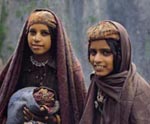 This
is an ancient population whose origins are uncertain. Some traces of
the Darde King can be found in the 4th and 5th century A/C. The linguists
who speak the Darde language compile it into a global form including
the archaic languages spoken in the western Himalayan region. This region
was, at an earlier time, called Dardistan. This
is an ancient population whose origins are uncertain. Some traces of
the Darde King can be found in the 4th and 5th century A/C. The linguists
who speak the Darde language compile it into a global form including
the archaic languages spoken in the western Himalayan region. This region
was, at an earlier time, called Dardistan.
It seems that they were Shepard, half wondering tribes, who held onto
the millions of traditions and Tibetan culture, especially the polyandry
even though this has been prohibited by the "modern governments"
of India and China, the two countries in which they live. They wonder
with their yak herds and pashmina sheep in the Rupshu region, in the
Changtang, - the south west of the high Tibetan plains which is part
of Ladakh as well as part of India , Jammu and Cashmere (except the
north-east, occupied by China, Aksai Chin). The Indian government has
just opened these regions to foreigners, with lots of reserves and certain
limits because these are strategic sensitive zones. The Dardes villages
are situated in the Indus valley only a few kilometers from the still
not stable border of Pakistan and Changtang which border China. The
Dardes or Drokpas, are of Aryan ethnic and originate from Baltistan
where they stayed, they were Bouddhist before the conversion (9th-10th
century). Their gardens are well taken care off, onions, tomatoes and
hundreds of apricot trees around which can be found many wine shoots
Every morning, the Dares pick some flowers, which according to tradition,
they pin onto a small hat decorated by pieces of money and mirrors.
Their skin is white, their eyes pale and they have a "Greek"
profile. . The Ladakhis, rough mountaineers and not very talkative,
say that the Dardes are descendants of Alexander the Great's soldiers.
It's only a legend which the Dardes like a lot and they talk about it
to anyone willing to listen. All around are pashmina sheep, their precious
wool, much desired will be sold to Cashmere merchants in Leh.
Extract from courrier internationnal : http://www.courrierinternational.com/voyage/article.asp?prec=0&suiv=6869&page=2&obj_id=20791
|
|
The Gipsi minority :
|
It's not rare to find in northern Cashmere, small groups
of travelling people here and there who come from India. Often, they
are looking for gold and one can see them at the rivers sifting non-stop
the mud of the rivers. Not very much appreciated, they do small jobs
to survive and live in their tents. (near Pas for example)
|
A voir aussi sur le
même thème :
|
|
Sources : "trekking in the Karakoram & Indukush"
(éd. Lonely Planet), "Les religions de l'humanité"
(Michel Malherbe), "Peuples d'asie centrale" (éd.
Anako), Le Grand Guide du Pakistan (Gallimard), Montagne magazine
N° 264, expérience personnelle, « Dans les montagnes
d’Asie, collection Etonnants voyageurs, ed. Hoëbeke
Révision B /27/07/04 (http://blankonthemap.free.fr)
var pagename='Page_local_life2); // Attention, pas d'espace entre chaque mot mais des _ a la place. Eviter aussi tout accents/guillemets, caractères spéciaux etc...
//-->
Pour tous renseignements, contactez le Webmaster.
|
















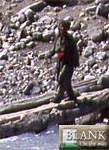


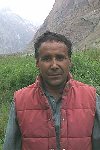
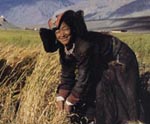
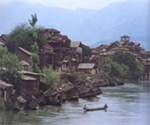
 This
is an ancient population whose origins are uncertain. Some traces of
the Darde King can be found in the 4th and 5th century A/C. The linguists
who speak the Darde language compile it into a global form including
the archaic languages spoken in the western Himalayan region. This region
was, at an earlier time, called Dardistan.
This
is an ancient population whose origins are uncertain. Some traces of
the Darde King can be found in the 4th and 5th century A/C. The linguists
who speak the Darde language compile it into a global form including
the archaic languages spoken in the western Himalayan region. This region
was, at an earlier time, called Dardistan.